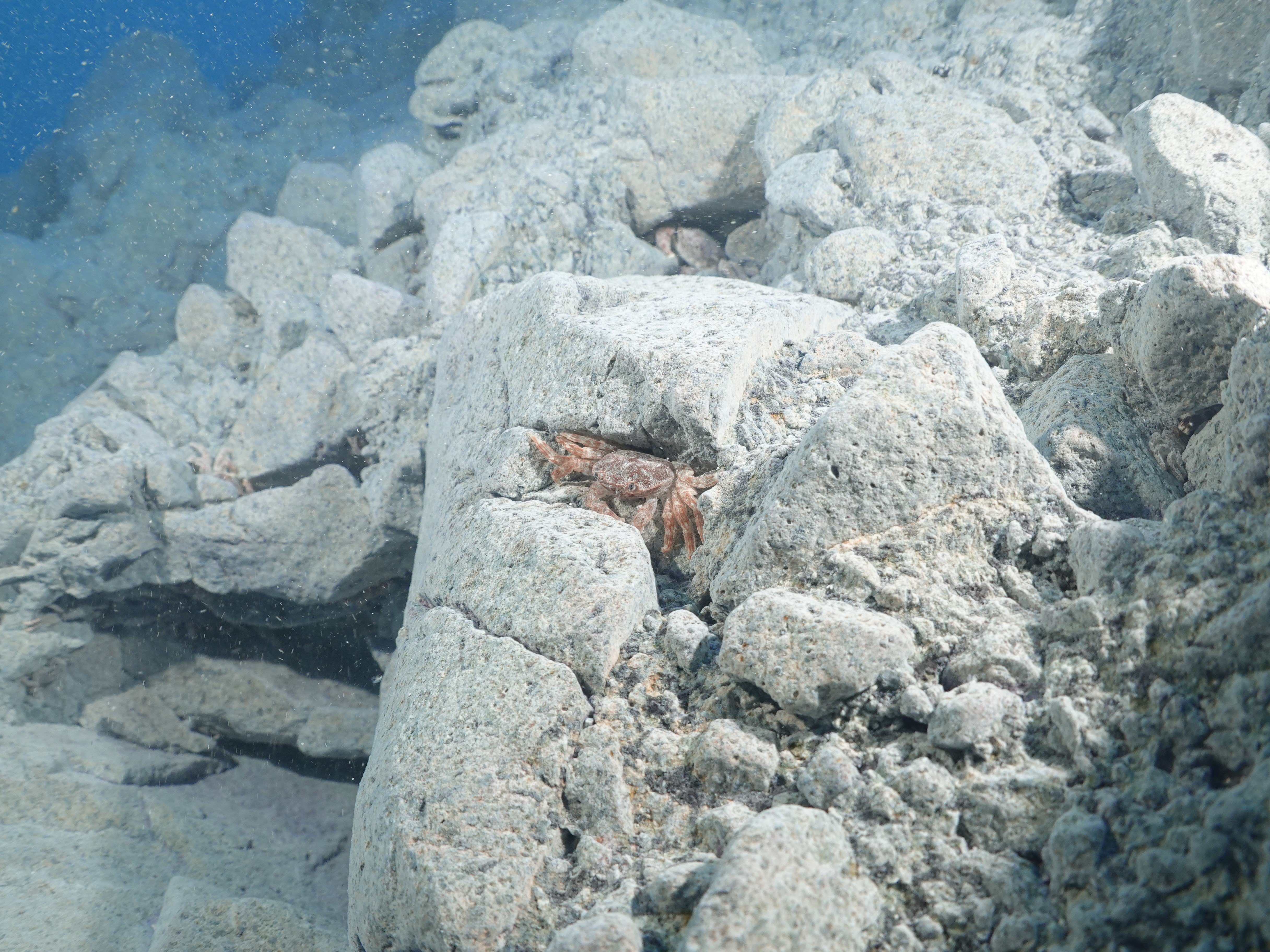Cellular mechanisms underlying extraordinary sulfide tolerance in a crustacean holobiont from hydrothermal vents
- Author:Pei-Hsuan Chou, Marian Y. Hu, Ying-Jey Guh, Guan-Chung Wu, Shan-Hua Yang, Kshitij Tandon, Yi-Ta Shao, Li-Yih Lin, Chi Chen, Kuang-Yu Tseng, Min-Chen Wang, Cheng-Mao Zhang, Bor-Cheng Han, Ching-Chun Lin, Sen-Lin Tang, Ming-Shiou Jeng, Ching-Fong Chang and Yung-Che Tseng
- Journal: Proceedings of the Royal Society B: Biological Sciences Volume 290, Article ID:20221973 (2023) https://royalsocietypublishing.org/doi/10.1098/rspb.2022.1973
Crabs endure a hellish setting — with help from friends
The research on the ecological exploration of the extreme environmental system of Turtle Island's shallow-water hydrothermal vents and the environmental adaptability and cellular metabolic detoxification mechanism of the involvement of the "marine holobiont" represented by the hydrothermal vent crab (Xenograpsus testudinatus) was published in the Proceedings of the Royal Society B. Biological Sciences: Biological Sciences. This novel discovery was also featured in Nature and selected for publishing in Nature's "Research Highlights".
The convective activity of sulfur in hydrothermal vents jets may have provided the environmental background for the origin of life, and organisms inhabiting this environment must have evolved unique mechanisms to tolerate the high concentration of sulfide present in hydrothermal vent systems, which has led to a progressive shift in the focus of studies on the beginning of life towards such environments. Therefore, scientists have long been interested in adaptation and detoxifying mechanisms to survive high sulfur settings. Due to the expensive cost of research and the difficulties in getting high-quality DNA/RNA samples from hot spring system species, information on hot spring system organisms remains limited.
Turtle Island's shallow-water hydrothermal vent system is located at the end of the southern rift of the Okinawa Trough, which is in the early stages of geological development and is characterized by active volcanism. Hydrothermal vent crab X. testudinatus is the first and only recorded metazoan found in this shallow-water hydrothermal vent system. The research team utilized the advantages of our Marine Research Station (MRS), along with the benefits of the molecular cell laboratory and marine ecological research, and engaged in Omic-based, combined with physiological, biochemical and molecular biology strategies to create a comprehensive cellular adaptation model for X. testudinatus, as well as a novel understanding of the sulfide metabolism and detoxification mechanism of this "marine holobiont". It was discovered that the less toxic sulfur compounds synthesized by the host crab could be transferred through the cellular membrane to the symbiotic sulfide oxidizing bacteria in the gill epithelial cells and then metabolized to produce energy that could be utilized by the cells, giving a vital energy source for the host X. testudinatus. Consequently, this work discloses the unique sulfide-tolerance mechanism of the "marine holobiont," which may be indicative of explaining the unique symbiotic evolutionary link among the planet's most extreme environmental creatures.
Article title:Cellular mechanisms underlying extraordinary sulfide tolerance in a crustacean holobiont from hydrothermal vents
Link to the full article:https://royalsocietypublishing.org/doi/10.1098/rspb.2022.1973
Link to the highlight in Nature:https://www.nature.com/articles/d41586-023-00035-y
